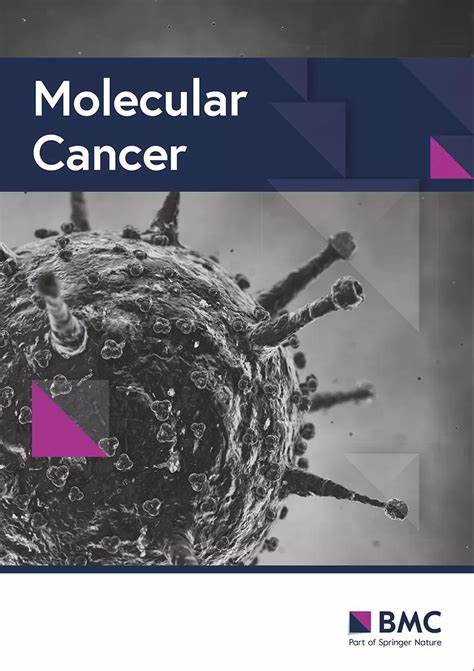Double-sided niche regulation in skin stem cell and cancer: mechanisms and clinical applications
IF 33.9
1区 医学
Q1 BIOCHEMISTRY & MOLECULAR BIOLOGY
引用次数: 0
Abstract
The niche microenvironment plays a crucial role in regulating the fate of normal skin stem cells (SSCs) and cancer stem cells (CSCs). Therapeutically targeting the CSC niche holds promise as an effective strategy; however, the dual effects of shared SSC niche signaling in CSCs have contributed to the aggressive characteristics of tumors and poor survival rates in skin cancer patients. The lack of a clear underlying mechanism has significantly hindered drug development for effective treatment. This article explores recent advances in understanding how niche factors regulate cell fate determination between skin stem cells and skin CSCs, along with their clinical implications. The dual roles of key components of the adhesive niche, including the dermo-epidermal junction and adherens junction, various cell types—especially immune cells and fibroblasts—as well as major signaling pathways such as Sonic hedgehog (Shh), Wingless-related integration site (Wnt)/β-catenin, YAP (Yes-associated protein)/TAZ (transcriptional coactivator with PDZ-binding motif), and Notch, are highlighted. Additionally, recent advances in clinical trials and drug development targeting these pathways are discussed. Overall, this review provides valuable insights into the complex interactions between skin cancer stem cells and their microenvironment, laying the groundwork for future research and clinical strategies.皮肤干细胞和肿瘤的双面生态位调控:机制和临床应用
生态位微环境在调节正常皮肤干细胞(SSCs)和癌症干细胞(CSCs)的命运中起着至关重要的作用。以CSC为靶点的治疗有望成为一种有效的策略;然而,csc中共享的SSC生态位信号的双重作用导致了肿瘤的侵袭性特征和皮肤癌患者的低生存率。缺乏明确的潜在机制严重阻碍了有效治疗的药物开发。本文探讨了生态位因子如何调节皮肤干细胞和皮肤csc之间细胞命运的决定及其临床意义的最新进展。强调了粘附生态位的关键成分的双重作用,包括真皮-表皮连接和粘附体连接,各种细胞类型,特别是免疫细胞和成纤维细胞,以及主要的信号通路,如Sonic hedgehog (Shh), wingless相关整合位点(Wnt)/β-catenin, YAP (yes相关蛋白)/TAZ(具有pdz结合基元的转录辅激活因子)和Notch。此外,还讨论了针对这些途径的临床试验和药物开发的最新进展。总的来说,本综述为皮肤癌干细胞与其微环境之间复杂的相互作用提供了有价值的见解,为未来的研究和临床策略奠定了基础。
本文章由计算机程序翻译,如有差异,请以英文原文为准。
求助全文
约1分钟内获得全文
求助全文
来源期刊

Molecular Cancer
医学-生化与分子生物学
CiteScore
54.90
自引率
2.70%
发文量
224
审稿时长
2 months
期刊介绍:
Molecular Cancer is a platform that encourages the exchange of ideas and discoveries in the field of cancer research, particularly focusing on the molecular aspects. Our goal is to facilitate discussions and provide insights into various areas of cancer and related biomedical science. We welcome articles from basic, translational, and clinical research that contribute to the advancement of understanding, prevention, diagnosis, and treatment of cancer.
The scope of topics covered in Molecular Cancer is diverse and inclusive. These include, but are not limited to, cell and tumor biology, angiogenesis, utilizing animal models, understanding metastasis, exploring cancer antigens and the immune response, investigating cellular signaling and molecular biology, examining epidemiology, genetic and molecular profiling of cancer, identifying molecular targets, studying cancer stem cells, exploring DNA damage and repair mechanisms, analyzing cell cycle regulation, investigating apoptosis, exploring molecular virology, and evaluating vaccine and antibody-based cancer therapies.
Molecular Cancer serves as an important platform for sharing exciting discoveries in cancer-related research. It offers an unparalleled opportunity to communicate information to both specialists and the general public. The online presence of Molecular Cancer enables immediate publication of accepted articles and facilitates the presentation of large datasets and supplementary information. This ensures that new research is efficiently and rapidly disseminated to the scientific community.
 求助内容:
求助内容: 应助结果提醒方式:
应助结果提醒方式:


